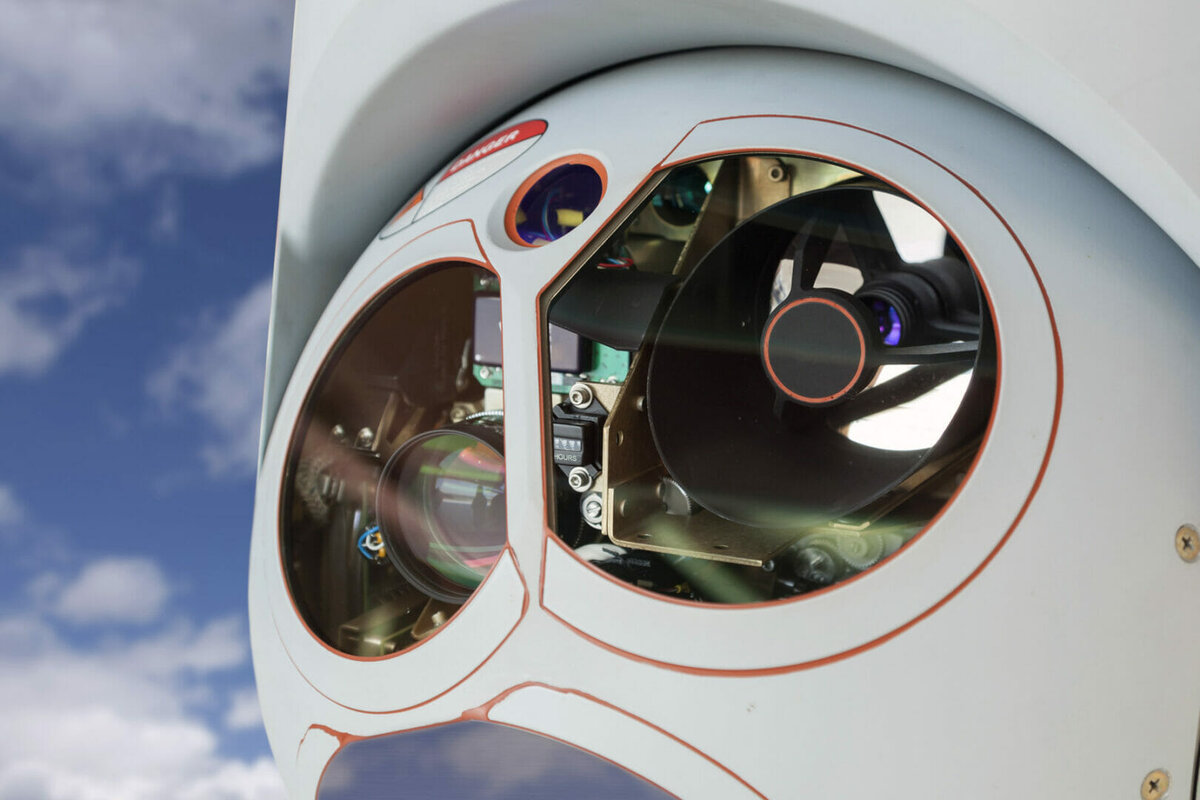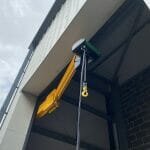Paul Townley-Smith, Director of Design & Prototyping, ZYGO Electro Optics
ZYGO’s Electro-Optics Group (EOG) has a plethora of experience in the development of complex electro-optical assemblies for mission-critical applications from objectives with dynamic focus capabilities for medical and semiconductor processes, to long surveillance systems for day and night security, to 3-D imaging devices used in the latest dentistry applications. The company has worked with numerous OEMs with an array of exacting applications, and here I give an insight into the answers to questions that the company is frequently asked as customers go through a supplier selection process.
When manufacturing electro optical parts and components, it is a truism that the supplier / customer relationship will need to be profound, as it is only through a pragmatic, transparent, and open partnership in product development that optimal results will be achieved.
Many electro-optic devices are expensive and used in mission critical end-use applications, and so there is no room for error, and customers must have the confidence and trust in their chosen supplier to deliver to budget and on-time. Because of this, it is understandable that an array of questions are asked that shine a light on the competencies and values of the electro-optics supplier.
I would recommend that as a minimum you ask these questions, and below you will see how ZYGO’s EOG would answer them.
HOW DO YOU MANAGE PROGRAMS?
This is perhaps the most fundamental question of all. Program management covers all aspects of the design and development of advanced electro optic devices, including the full cycle of product development from proposal and design, through prototype development and analysis, to product development and manufacturing. It is therefore vital that your chosen supplier should have a detailed and transparent management process, which is at the same time instantly accessible to all parties, and contains the detail and agility to respond to unforeseen circumstances in a timely and cost-effective manner.
ZYGO’s EOG programs follow a standard process to get from idea to finished device. The schedule is published as a Microsoft project document, and is typically reviewed and updated on a weekly basis by all relevant team members.
Essentially, ZYGO’s is a 6-stage project management process.
- Specification Development. ZYGO’s EOG works closely with the customer to develop first order candidate designs and review specifications to determine the technical and commercial feasibility of the proposed project. Specifications that are key cost and performance drivers will be identified and alternatives will be proposed as applicable.
- Preliminary Design Review. A preliminary optical design and mechanical model is produced with estimated performance (including preliminary Finite Element Analysis [FEA] where appropriate) relative to specification. The key goal is to develop the proposed design to the point that long lead-time items can be ordered thereby eliminating unnecessary delays in production.
- Critical Design Review. The final optical design with tolerances showing yield relative to specifications is produced. The goal is to release all parts for fabrication.
- Prototype units are tested and built. Update prints are also produced concerning any manufacturability issues that are uncovered. Any required qualification tests and performed, and production process improvements are identified.
- Low-Rate Initial Production (LRIP). Improved designs and processes are implemented and designed. Prints are refined if any further manufacturability issues are uncovered. Designs are placed under full production design control.
- Routine production is initiated under ZYGO EOG’s ISO 9001 certified quality system. Automated electronic data management for larger volume programs is implemented.
HOW IS FRONT-END ITERATIVE DESIGN WORK HANDLED VS PROTOTYPE AND PRODUCTION?
At the heart of this question is cost control, and the ability for customers to be able to accurately assess costs, and not see them spiral if unforeseen issues develop.
Transparency here is vital. If the requirements are well defined ZYGO’s EOG can do the design work at a firm fixed price based on a specification and statement of work (SOW). When the requirements are fuzzy, we do front-end iterative design on a time and materials basis, with a “not to exceed” cost limit. ZYGO’s EOG generally doesn’t take on research work, where the fundamental feasibility of an idea still needs to be proven, as here costing can be open-ended, and it is not possible to guarantee a viable design fit for production can be achieved.
Once we have a finalized and viable design, the prototypes and production can be bid on a firm fixed basis. We don’t bid prototypes and production until the design is at the state where we can get quotes for materials. This allows out-of-the-box accurate and detailed pricing which barring major unforeseen circumstances should see little budget variation moving forward.
HOW MANY DESIGNERS/ENGINEERS DO YOU HAVE AND WHAT IS THEIR EXPERTISE AND EXPERIENCE?
Any electro-optical device manufacturing project will be driven by a mixture of your chosen supplier’s values and competencies, the quality and extent of the capital equipment that they have invested in to undertake the work, and above all the knowledge of experience of the team driving the project.
ZYGO’s EOG has 6 engineers dedicated to the electro-optics business. We have 5 engineers with over 25 years of experience developing optical products, and a full-time optical designer with over 10 years’ experience, and an opto-mechanical designer with over 25 years’ experience. This team is supported by a world class team of over 50 scientists and engineers at Zygo.
When embarking on an electro-optic device development project you want to make sure that your chosen supplier not only has the best equipment to hand, but they have the experience, knowledge, versatility, passion, drive, and enthusiasm to get the most out of it. Values, knowledge, and competencies combine to get the best results.
HOW DO YOU MANAGE CONTENTION BETWEEN CUSTOMERS FOR ACCESS TO ENGINEERING RESOURCES?
However well planned and managed, there will be situations when developing electro-optics devices when contingency in terms of resources are required. Here it is extremely important to assess the ability of your short-listed supplier to have the agility and depth of resource to respond to ad hoc requirements.
To manage surge capacity in ZYGO’s EOG we can access a network of consultants that have been associated with us for years or, bring in resources from other groups in Zygo Corporation. Regardless of how the project is staffed we will always be clear about the expected schedule, and demonstrate the ability to keep resource levels optimized for project success on time and to budget.
HOW DO YOU TRANSITION PRODUCTS FROM DESIGN TO MANUFACTURING?
Product development from the design stage can be a critical challenge, however experienced the designer. Any design needs to be finalized with a real understanding of product requirements, must satisfy and array of different stakeholders, and of course it must facilitate the production of a device that is fit for purpose and commercially successful.
It is here that the depth and transparency of your relationship with your chosen supplier is paramount. At ZYGO EOG, the product development team starts to get involved in the project around the time of the Preliminary Design Review (PDR). This team develops a parts tree, sketches out an assembly procedure, composes an acceptance test plan, and produces preliminary travelers to manage production data. These documents are refined as the product progresses through design, and are then used to build prototypes and procedures and traveler data requirements which are updated to reflect what has been learned in prototyping.
WHAT IS YOUR APPROACH TO PRODUCT VERIFICATION AND VALIDATION?
On the basis that if you cannot measure it you cannot make it, and if you cannot validate the integrity of a finished device it renders it useless, this is a vital question. Where other suppliers will offer “by design” estimates or “let’s try it and see” when facing measurement challenges, ZYGO’s EOG has the capability to develop custom test methods and equipment for truly validating critical specifications. Examples include: measuring MTF over temperature and altitude; odd wavelength interferometry; ppm distortion; and true gravity compensation for systems with large optics.
WHAT EXPERIENCE DO YOU HAVE IN PRODUCTS LIKE MINE?
I have touched upon the need for experience to optimize results in the manufacture of electro-optic devices, and here you should seek out a supplier with a depth of experience and knowledge working with an array of exacting products.
ZYGO’s EOG for example has worked in the following sectors with various applications. In the medical industry the group has worked on imaging equipment, and specific to laser eye surgery on LASIK flap cutting and cataract capsulorhexis; for life sciences devices for fluorescence microscopy and gene sequencing; in the defense and aerospace industry high performance ISR imaging systems, high power athermal beam expanders, and helmet Mount Display (HMD); for the semiconductor industry devices for maskless lithography, high laser power material processing, SIL (NA3.3) microscope objectives, and microscope objectives for semi inspection; and for NewSpace devices for LEO telescopes, star trackers, and lasercom terminal optics. The company has also produced fiber coupled micro-optics devices, high performance machine vision lenses, and AR/VR systems.
WHAT ARE YOUR LIMITS AT THE HIGH END?
Some electro-optics devices require exacting and extremely tight tolerance attainment. As such, it is always useful to see how far your chosen supplier can push the envelope. At ZYGO EOG for example, with the support of the extreme precision optics (EPO) team we can produce surfaces suitable for extreme ultraviolet lithography (EUV) — the most challenging commercial application for optics. We can align lenses down to ~1um of total indicator reading (TIR) and maintain airspaces to ~2um. We have successfully designed and manufactured athermal systems that operate over a temperature range of -25C to 65C.





